Consideration on Retrofilling of Transformer Insulating Oil Using Palm Coat Fatty Acid Ester
- Fumio Kurihara
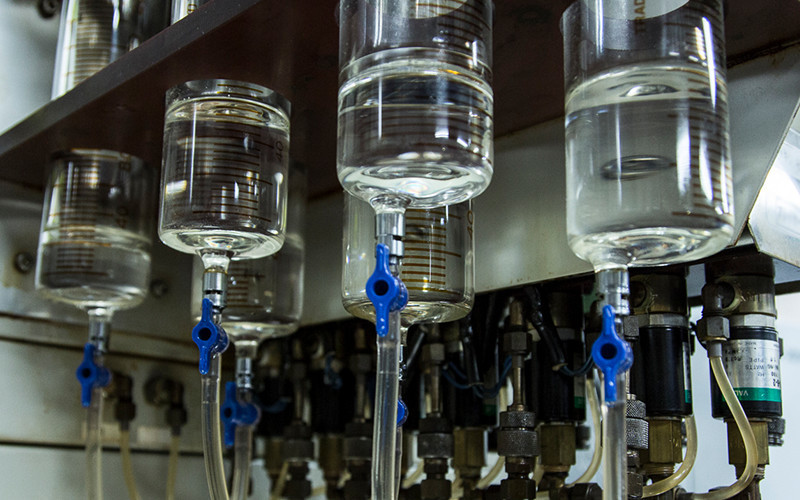
With the growing awareness of global environmental issues, there is a growing need for environmentally friendly devices used in the heavy electric field. In transformers, for example, the development of transformers using plant-derived ester-based insulating oils (hereinafter referred to as ester oils), which are excellent in environmental performance and biodegradability, is progressing as liquid insulating media in place of mineral oil derived from fossil resources. As an application of ester oil to transformers, retrofilling from conventional mineral oil to ester oil is available for maintenance and repair of existing transformers as well as new ones.
TAKAOKA TOKO conducts research and development on insulating oils and related technologies. This time, we will introduce research on retrofitting transformers using palm coat fatty acid ester (hereinafter referred to as PFAE), a kind of ester oil.
*Retrofilling: Improving and maintaining electrical devices by the replacement of insulating oil.
Technology
Retrofilling of transformer insulating oil using palm coat fatty acid ester that does not emit CO2 in its life cycle.
Palm coat fatty acid ester, which is an ester oil with low viscosity and high substitutability with conventional insulating oil. TAKAOKA TOKO has been focusing on this PFAE since around 2007. In this research, while developing an environment-friendly extra-high voltage transformer using PFAE, we have been conducting verification of mixing with mineral oils and verification of actual devices for retrofitting to aged devices.
As a result of various verifications such as changes in the characteristics of insulating oil (breakdown voltage, volume resistivity, etc.) and the temperature rise value of insulating oil, the transformer and insulating oil retrofilled with PFAE has showed slight changes in characteristics but has been verified to have sufficient practical performance. In the future, we plan to further investigate the stability of insulating oil after retrofilling, maintenance management methods, evaluation of added value, etc.

Profile
-
 Fumio KuriharaGroup Manager, Material Technology Group,
Fumio KuriharaGroup Manager, Material Technology Group,
Research and Development Center,
Technology Development Division
Replacing mineral oil derived from fossil resources with eco-friendly ester oil.
Environmental issues such as global warming, pollution of air, soil and water, and loss of biodiversity are being tackled at a global level. In the heavy electric appliance field, however, the issues of "eliminating fossil resources" and "CO2 reduction" have been identified as urgent issues. For example, so-called mineral oil derived from fossil resources has been the mainstream of insulating oil used as an electrical insulation material for transformers. Recently, however, attention has been focused on ester oils made from soybeans, rapeseed, sunflower, palm coconut, etc.
TAKAOKA TOKO has been evaluating the performance of insulating oils made from soybeans, rapeseed, sunflower, palm coconut, and other ingredients. I have been involved in insulating oil research for over 20 years, but it was around 2007 that I first noticed PFAE made from palm coconut. The reason why we focused on PFAE among several plant-based ester oils is that it is smoother than other ester oils used in transformers. The lower the viscosity, the higher the performance of removing and dissipating heat from the device. The magnitude of the cooling action is directly connected to the ease of use as insulating oil and the improvement of transformer performance. In addition, PFAE was recognized for its multi-faceted advantages suitable for insulating oils in new shafts, such as "difficult to catch fire," "low environmental impact," and "difficult to deteriorate the components inside the transformer."

In the field of heavy electricity in the world, ester oil has already been used as an insulating medium in some parts, but Japan is still in the developing stage. Our research has demonstrated the above-mentioned advantages when PFAE is applied to the insulation medium of transformers, so we would like to spread this insulating oil with its excellent characteristics to transformers all over Japan.

Looking at two or three steps ahead, we will promote the development of materials that will support the future of electric power networks.
We have been engaged in research and development on the application of ester oils, focusing on their high environmental performance and new characteristics that are not found in conventional insulating oils. In 2007, when the research started, ester oils began to attract domestic attention. We did not have a clear need, but rather, we began to work entirely at the seeds starting point. Electricity is a lifeline for everyday life, so electric power devices that support the heavy electrical industry are required to have a high level of safety and performance. Therefore, it is inevitably difficult to develop new products that have never been developed before. At first, we couldn't get a reputation in the industry or in the company.
All R&D is a huge and detailed series of trials and errors. It may be simple, in a sense, to make just what is being sought. Prereading and creating what will be needed in the next era requires that the importance and advantages of the development must be disseminated even after the development succeeds in advance. In that sense, there was a long conflict between seeds and needs during the research on the application of ester oils.


In order to overcome such a situation, we have repeatedly verified the advantages and usefulness of ester oil application using various indicators. Of course, we have focused not only on collecting the results obtained, but also on elucidating the mechanism. Recently, due to the growing awareness of environmental issues in the world, we have begun to hear the comments of customers who want to apply ester oils and the report that insulating oils using PFAE have been introduced into transformers used in substations and other facilities.
Nevertheless, 99.9% of domestic insulating oil is mineral oil. If we replace all the insulating oils in the extra-high voltage transformers in the world with PFAE, CO2 emitted from the transformer lifecycle is estimated to be about 1/50. Although there remain some issues such as cost-related issues, we believe that we must continue to study ester oils such as PFAE.
As the environment surrounding electric power changes, the power devices and systems must also undergo major shifts. We would like to continue to bring together the wisdom of all our researchers to realize the next generation of clean and smart power networks from the field of materials technology.
Latest articles
-
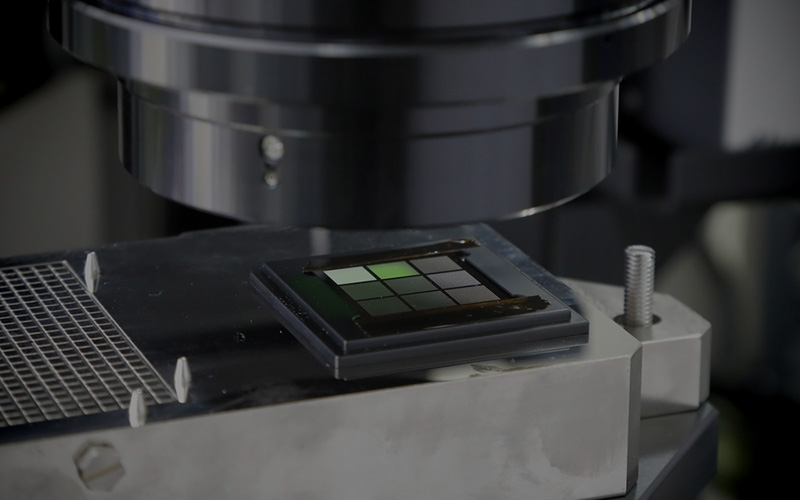 interviewThe confocal surface shape measurement system for semiconductor reliabilityIt is no exaggeration to say that semiconductors are used in everything supporting our lives and industry in modern society. Examples include smartphones, home appliances, and industrial products in various fields.
interviewThe confocal surface shape measurement system for semiconductor reliabilityIt is no exaggeration to say that semiconductors are used in everything supporting our lives and industry in modern society. Examples include smartphones, home appliances, and industrial products in various fields. -
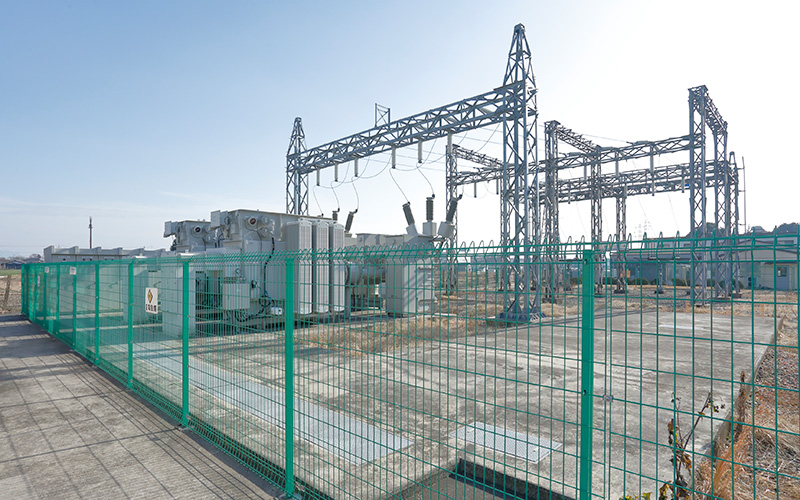 interviewImplementation of a Sensor Solution for Substation DigitalizationGlobal energy prices remain at high levels. The presumed cause is the imbalance between energy supply and demand due to recovery in economic activity from the spread of COVID-19, unseasonable weather, disasters, Russia's invasion of Ukraine, and other factors. The soaring energy prices naturally have an impact on the electricity sector, putting not only ordinary households but also electricity suppliers, or electric power companies, in a difficult situation. Power companies are being forced to cut costs to keep power prices down.
interviewImplementation of a Sensor Solution for Substation DigitalizationGlobal energy prices remain at high levels. The presumed cause is the imbalance between energy supply and demand due to recovery in economic activity from the spread of COVID-19, unseasonable weather, disasters, Russia's invasion of Ukraine, and other factors. The soaring energy prices naturally have an impact on the electricity sector, putting not only ordinary households but also electricity suppliers, or electric power companies, in a difficult situation. Power companies are being forced to cut costs to keep power prices down. -
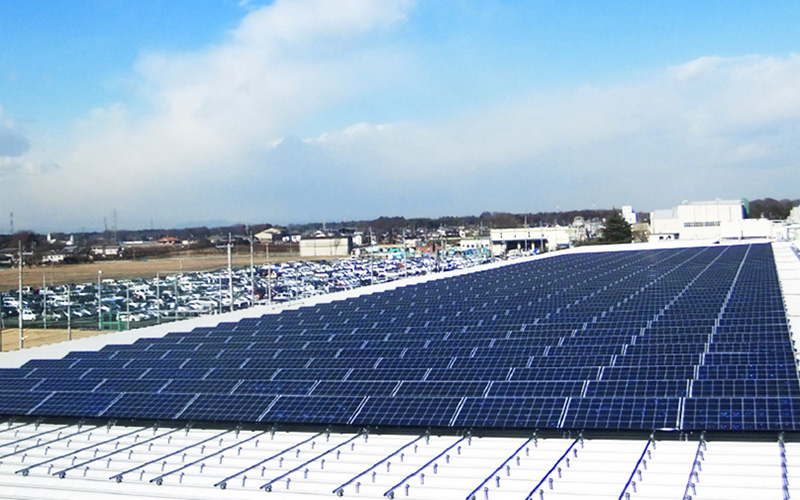 interviewDevelopment of Techniques for Solar Power Generation Prediction Using AIIn order to promote carbon neutrality, the use of renewable energy that doesn't emit CO2 is expanding.Among renewable energy resources, solar power generation is an important one which will continue to grow in popularity.
interviewDevelopment of Techniques for Solar Power Generation Prediction Using AIIn order to promote carbon neutrality, the use of renewable energy that doesn't emit CO2 is expanding.Among renewable energy resources, solar power generation is an important one which will continue to grow in popularity. -
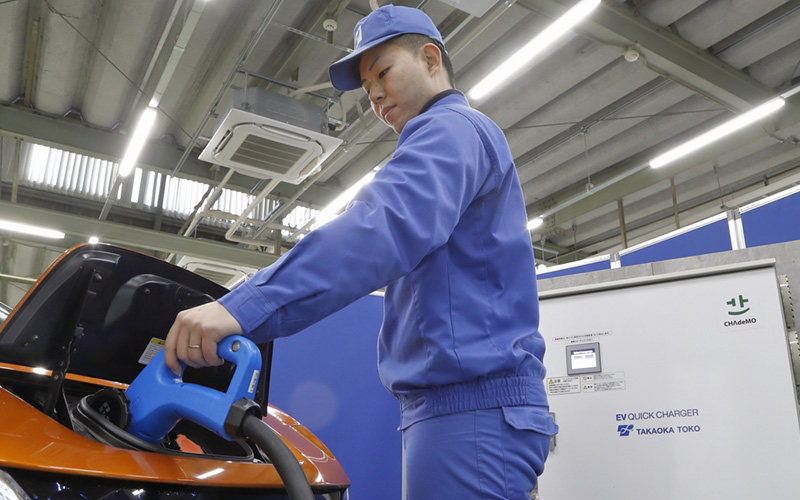 interviewDevelopment of Medium-Capacity Quick Charger for Electric VehiclesIn anticipation of expansion of EV charging infrastructure in Japan, where the EV shift is accelerating, we worked on the development of the “medium-capacity quick charger (B11)” as a charger that meets the needs for intermediate chargers between normal chargers and quick chargers. This article introduces the features of the product, ingenuity in the development process, and our future vision.
interviewDevelopment of Medium-Capacity Quick Charger for Electric VehiclesIn anticipation of expansion of EV charging infrastructure in Japan, where the EV shift is accelerating, we worked on the development of the “medium-capacity quick charger (B11)” as a charger that meets the needs for intermediate chargers between normal chargers and quick chargers. This article introduces the features of the product, ingenuity in the development process, and our future vision.
